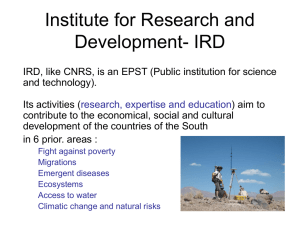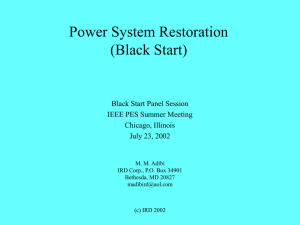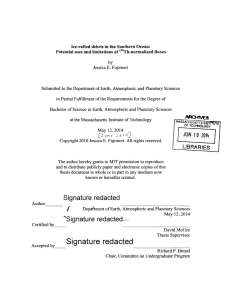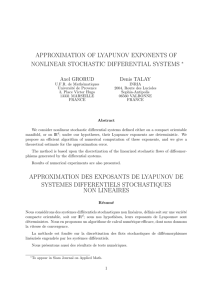TITLE: The collapse of the British-Irish Ice Sheet: the indicative
advertisement
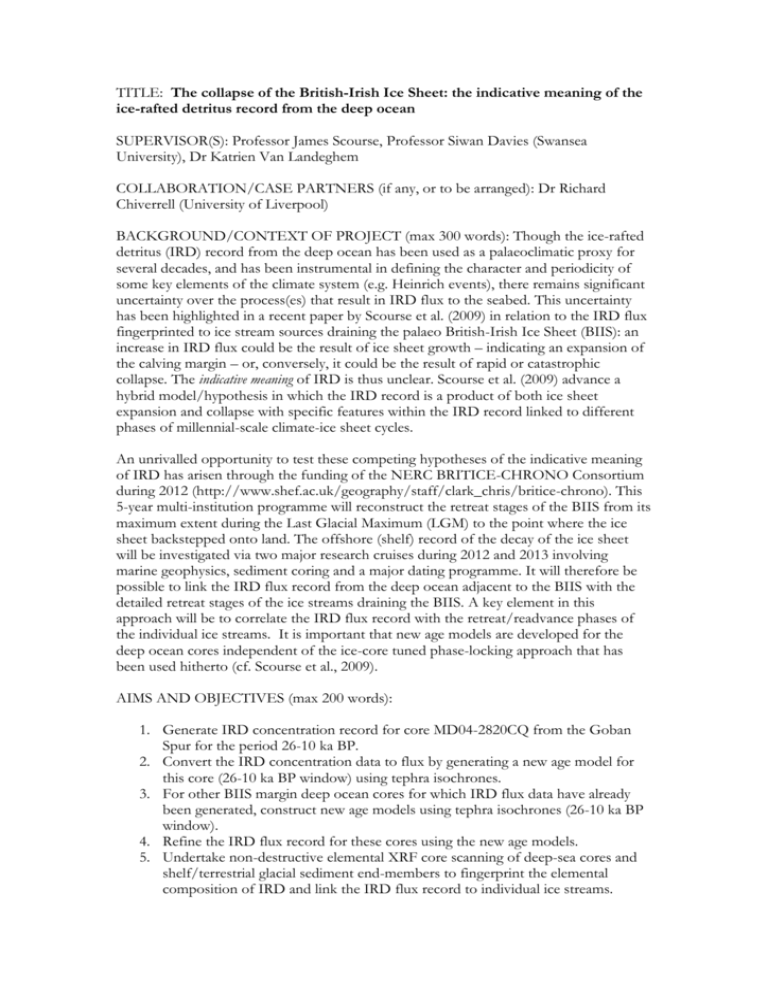
TITLE: The collapse of the British-Irish Ice Sheet: the indicative meaning of the ice-rafted detritus record from the deep ocean SUPERVISOR(S): Professor James Scourse, Professor Siwan Davies (Swansea University), Dr Katrien Van Landeghem COLLABORATION/CASE PARTNERS (if any, or to be arranged): Dr Richard Chiverrell (University of Liverpool) BACKGROUND/CONTEXT OF PROJECT (max 300 words): Though the ice-rafted detritus (IRD) record from the deep ocean has been used as a palaeoclimatic proxy for several decades, and has been instrumental in defining the character and periodicity of some key elements of the climate system (e.g. Heinrich events), there remains significant uncertainty over the process(es) that result in IRD flux to the seabed. This uncertainty has been highlighted in a recent paper by Scourse et al. (2009) in relation to the IRD flux fingerprinted to ice stream sources draining the palaeo British-Irish Ice Sheet (BIIS): an increase in IRD flux could be the result of ice sheet growth – indicating an expansion of the calving margin – or, conversely, it could be the result of rapid or catastrophic collapse. The indicative meaning of IRD is thus unclear. Scourse et al. (2009) advance a hybrid model/hypothesis in which the IRD record is a product of both ice sheet expansion and collapse with specific features within the IRD record linked to different phases of millennial-scale climate-ice sheet cycles. An unrivalled opportunity to test these competing hypotheses of the indicative meaning of IRD has arisen through the funding of the NERC BRITICE-CHRONO Consortium during 2012 (http://www.shef.ac.uk/geography/staff/clark_chris/britice-chrono). This 5-year multi-institution programme will reconstruct the retreat stages of the BIIS from its maximum extent during the Last Glacial Maximum (LGM) to the point where the ice sheet backstepped onto land. The offshore (shelf) record of the decay of the ice sheet will be investigated via two major research cruises during 2012 and 2013 involving marine geophysics, sediment coring and a major dating programme. It will therefore be possible to link the IRD flux record from the deep ocean adjacent to the BIIS with the detailed retreat stages of the ice streams draining the BIIS. A key element in this approach will be to correlate the IRD flux record with the retreat/readvance phases of the individual ice streams. It is important that new age models are developed for the deep ocean cores independent of the ice-core tuned phase-locking approach that has been used hitherto (cf. Scourse et al., 2009). AIMS AND OBJECTIVES (max 200 words): 1. Generate IRD concentration record for core MD04-2820CQ from the Goban Spur for the period 26-10 ka BP. 2. Convert the IRD concentration data to flux by generating a new age model for this core (26-10 ka BP window) using tephra isochrones. 3. For other BIIS margin deep ocean cores for which IRD flux data have already been generated, construct new age models using tephra isochrones (26-10 ka BP window). 4. Refine the IRD flux record for these cores using the new age models. 5. Undertake non-destructive elemental XRF core scanning of deep-sea cores and shelf/terrestrial glacial sediment end-members to fingerprint the elemental composition of IRD and link the IRD flux record to individual ice streams. 6. Compare the shelf/terrestrial retreat histories for individual BIIS ice stream sectors with the deep-sea IRD flux record from adjacent (“sentinel”) core sites. MATERIALS/METHODS/TRAINING ELEMENT (max 200 words) It is hoped that the BRITICE-CHRONO research cruises will be scheduled to enable the student to gain experience of sediment coring and geophysical survey at sea. Core MD04-2820CQ is owned by the principal supervisor and available for analysis in SOS, and other cores are available for analysis via collaborative frameworks facilitated by BRITICE-CHRONO. The principal laboratory techniques to be employed will be total IRD analysis (concentration by weight dry sediment) and tephra isochrones will be isolated via reconnaissance sampling, analysis under petrological microscope, and geochemical characterisation using electron microprobe (NERC Facility). The tephra component will be supervised by Prof. Siwan Davies (Swansea). Non-invasive XRF elemental analyses will be undertaken using a Geotek Multi-Sensor Core Logger with a Olympus Delta XRF sensor in collaboration with Dr Richard Chiverrell at the University of Liverpool. Richard Chiverrell also leads the terrestrial sampling campaign within BRITICE-CHRONO and will be able to procure glacial end-member samples for XRF analysis from appropriate locations within ice stream sectors from the shelf and on land. The XRF data will be analysed via multivariate statistical techniques. The student will not only benefit from the opportunity for involvement in research cruises via BRITICE-CHRONO, but will also enjoy supervisory support and be able to participate fully in the regular workshops of the BRITICE-CHRONO Consortium; this will also include a significant number of other research students from other collaborating institutions and will therefore add significant training value. COSTS (max 100 words): Major research costs will be covered by BRITICE-CHRONO (e.g. participation in cruise and workshop activity, laboratory analyses). Electron microprobe analysis of tephra will be undertaken at the University of Edinburgh and funded via the training grant or the ERC TRACE Project (to Siwan Davies, Swansea University) if necessary.



